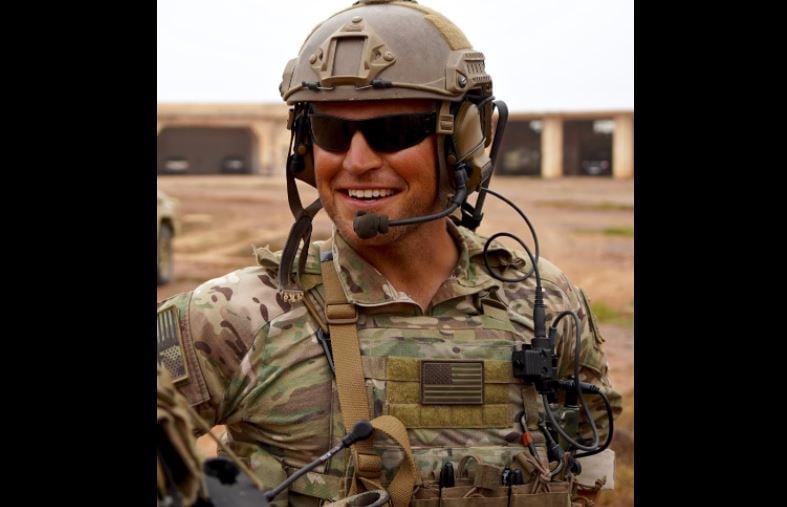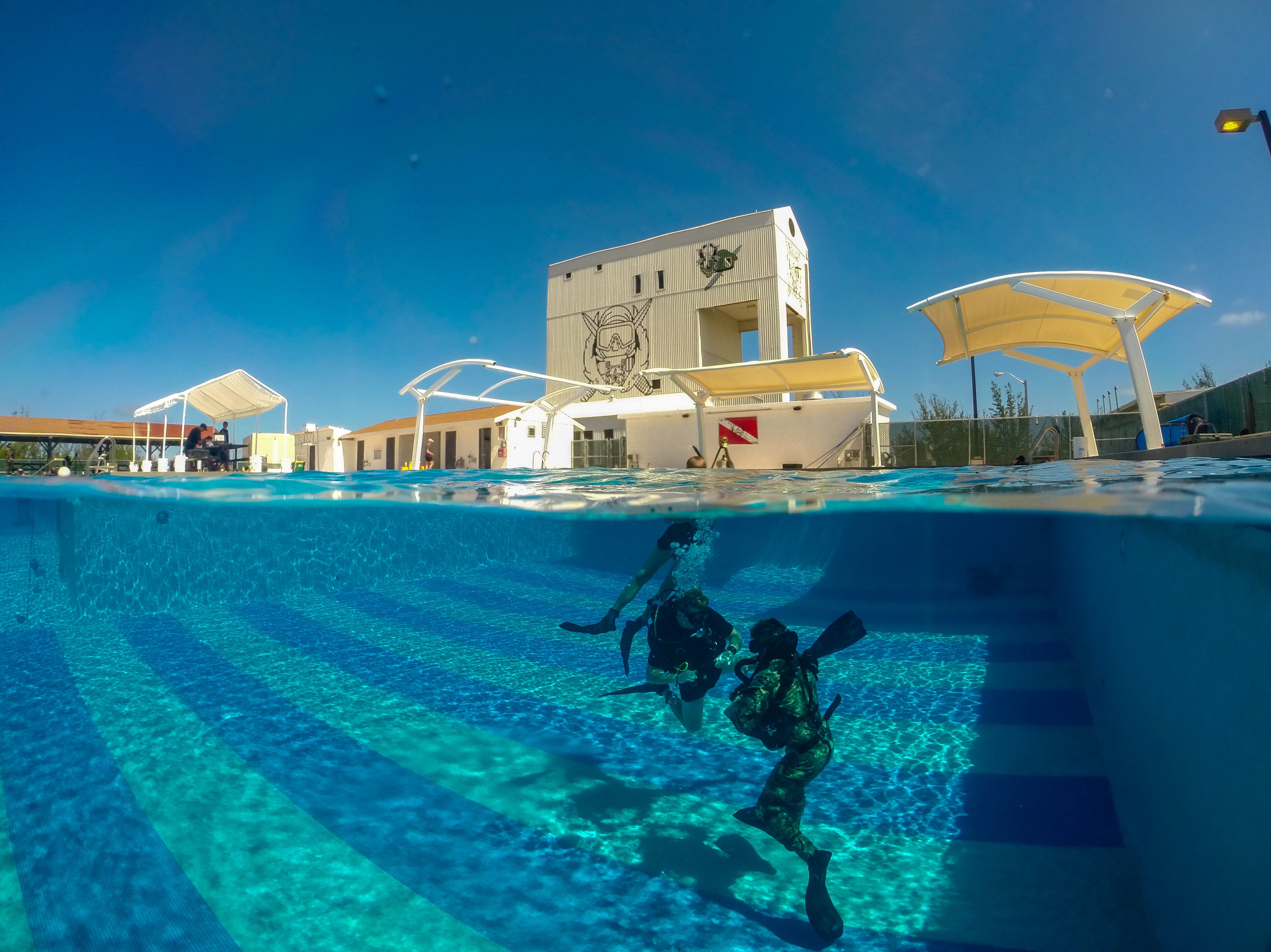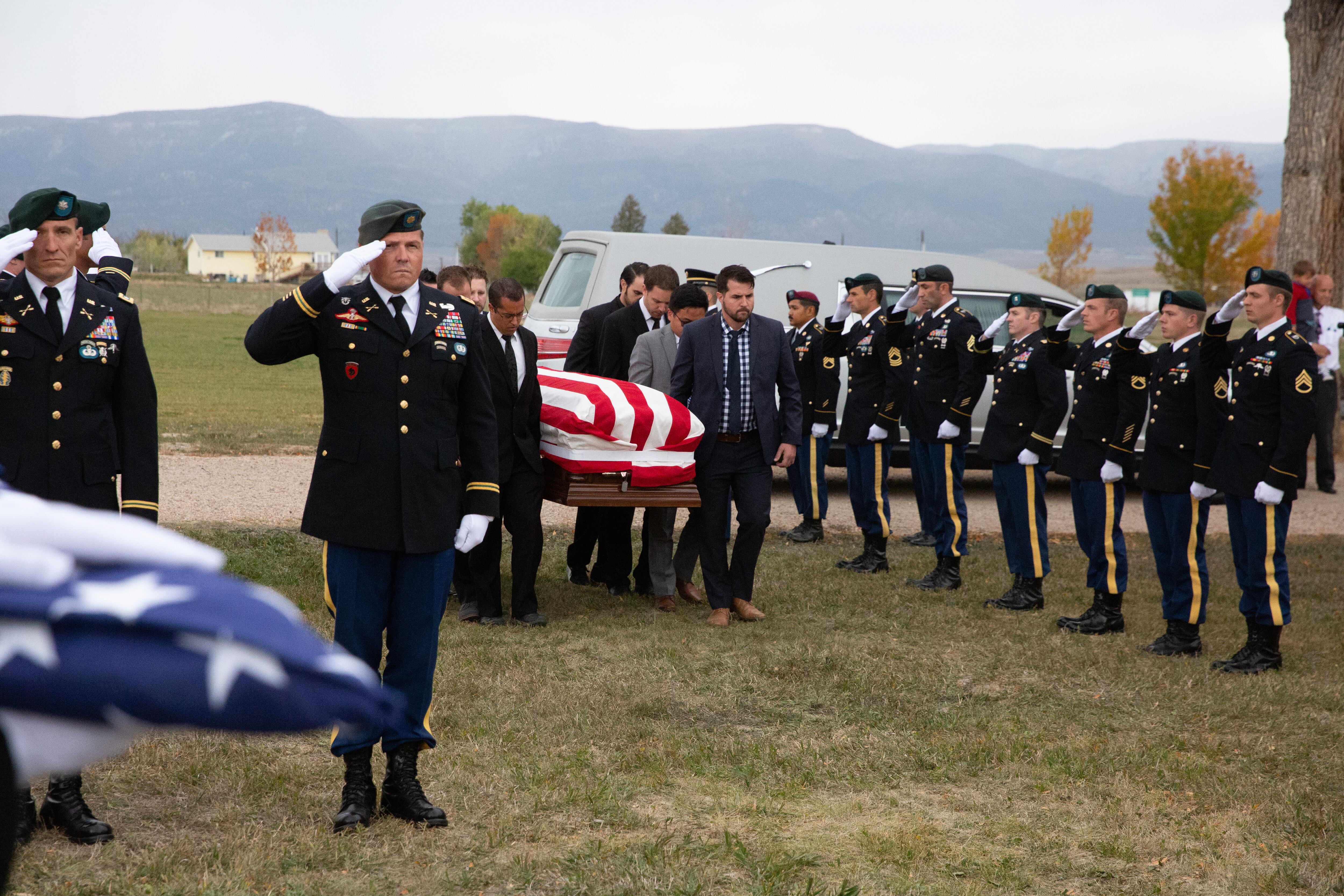Army Special Operations Command will test new programmable swim vests after a Green Beret drowned during a roughly one mile swim in a quarry at Fort Campbell, Kentucky, while preparing for combat diver school in fall 2021.
Staff Sgt. Paul Lincoln Olmstead was the second Green Beret to drown during dive-related training in 2021. An airman also drowned at his service’s dive school in 2020 under circumstances similar to those of Olmstead.
The new programmable vests ― which are found on the civilian market ― automatically inflate using carbon dioxide, or CO2, cartridges when a swimmer sinks below a set depth.
That could have saved Olmstead’s life after he went unconscious for unknown reasons and drowned Sept. 21, 2021, according to an investigation report obtained by Army Times through a Freedom of Information Act request.
Investigators found that the “primary contributing factor” to Olmstead’s death was the “inadequacy of the Aqualung Scout Swimmer Vest,” which requires a drowning victim to be conscious to activate the CO2 cartridges in their vest.
Investigators also raised concerns about other practices at 5th Special Forces Group’s Maritime Assessment Course, which prepares soldiers for formal combat diver training.
Although instructors running the course weren’t negligent or in violation of any regulations, the risk mitigation measures “were not adequate to prevent SSG Olmstead’s death,” the report reads. “Specifically, allowing swimmers to swim without a buoy attached contributed to the instructors’ and students’ inability to locate SSG Olmstead after he had gone subsurface.”
Because Fort Campbell’s Joe Swing Quarry is such a confined space, 5th SFG abandoned the use of buoys years ago, the report added. An unnamed individual from 5th SFG said in the report that the buoys risked causing swimmer entanglement.

Previous deaths
Olmstead’s death came months after another Green Beret, Staff Sgt. Micah Walker, drowned at the Army’s combat diver school in Key West, Florida, and a year after an airman drowned at the Air Force’s combat diver school in Panama City, Florida.
None of the deaths involved breathing compressed gas or actual diving.
Walker’s death occurred during a water treading exercise, according to a dive official with John F. Kennedy Special Warfare Center and School. The official spoke with Army Times days after the death on condition of anonymity due to an ongoing investigation.
Safety swimmers had Walker out of the pool within three to five seconds of losing consciousness and slipping underwater, the official said in July 2021. He also disputed an Army Safety Center press release that called Walker’s death a drowning.
However, Army casualty records prepared this summer and obtained by Army Times via a Freedom of Information Act request stated that Walker’s death was indeed a drowning.
Maj. Rick Dickson, a spokesman at the John F. Kennedy Special Warfare Center and School, declined to comment further on the incident and said the investigation into Walker’s death remains ongoing.

A third recent drowning death in Panama City involving Air Force Special Tactics trainee Airman 1st Class Keigan Baker occurred during an open ocean swim.
Similar to Olmstead’s case, investigators found no indication that Baker attempted to activate his CO2 cartridges before drowning, meaning he likely was unconscious. Also like Olmstead’s case, investigators did not definitively determine why he went unconscious, though overexertion was one possible explanation.
Wear and tear
After Baker’s death in 2020, the Air Force Special Warfare Training Wing tested several commercially available automatic inflating swim vests, said wing spokesman 1st Lt. Xiaofan Liu.
However, the wing ultimately decided not to acquire any of them.
“The automatic inflating swim vests that the Special Warfare Training Wing initially tested were not designed for the continual wear and tear of the combat swimming conducted by trainees at the Air Force Combat Dive Course,” Liu wrote in an emailed statement.
“These automatic inflating swim vests were designed to save someone if he or she were to fall overboard from a vessel or aircraft ... [and] didn’t hold up well to the strenuous activities conducted by the trainees,” Liu added, which include “open water swims, water jumps from fixed-wing aircraft, hoisting patients out of the water, and fast-roping into the water.”
The Air Force did implement some changes, though, because there were problems found after Baker’s death that also echo issues later found in Olmstead’s case.
The investigation into Baker’s death found that instructors had special tactics trainees conduct a 2,000-yard open water swim without lines tethering them to swim buddies to ensure they didn’t become separated.
The Air Force now requires dive trainees to swim within six feet of a swim buddy at all times so a teammate can inflate a distressed swimmer’s vest if they go unconscious. Trainees also must wear buoys during swims after it took hours to find Baker’s body.
Olmstead was also lost for some time underwater despite vigorous efforts by teammates to locate him.

The investigation into Olmstead’s death stated that he was close to finishing the quarry swim when he drowned. An instructor spotted Olmstead pass by his boat, then turned to observe other students.
“When he passed by, it was clear he was putting out incredible effort, typical of students sprinting the last couple hundred meters of the swim when close to cut off time,” an instructor’s witness statement reads. “The noise was typical of a soldier exerting great physical effort. It was not a sound of distress.”
When the instructor looked back at where Olmstead had been, he realized the student was missing. Instructors dove underwater and students waded in the shallow areas in search of him. The fire department and scuba teams were called in to sweep the quarry for him.
Olmstead’s scout swimmer vest was “without defect” and inflated as designed when investigators later manually activated the CO2 cartridges to test it out. Investigators determined that Olmstead most likely went unconscious before drowning.
In addition to recommending new swim vests, the investigation called out how difficult it had been for soldiers to find Olmstead in a timely manner, which may have saved his life. Army special operations officials said they’ve reviewed those findings and made changes.
“At this time, the command is looking at acquiring the recommended vests for further testing and evaluation to determine suitability,” said Maj. Russell M. Gordon, spokesman for 1st Special Forces Command. “In the meantime, the command took immediate action to mitigate risks by requiring students to wear an attached buoy for easy identification in the water, increase the number of safety boats, and increase the number of safety swimmers and also safety personnel outside the water.”
“The loss of SSG Paul Olmstead was an absolute tragedy, and he will always be a valued member of our Army special operations family,” Gordon added.
Kyle Rempfer was an editor and reporter who has covered combat operations, criminal cases, foreign military assistance and training accidents. Before entering journalism, Kyle served in U.S. Air Force Special Tactics and deployed in 2014 to Paktika Province, Afghanistan, and Baghdad, Iraq.





